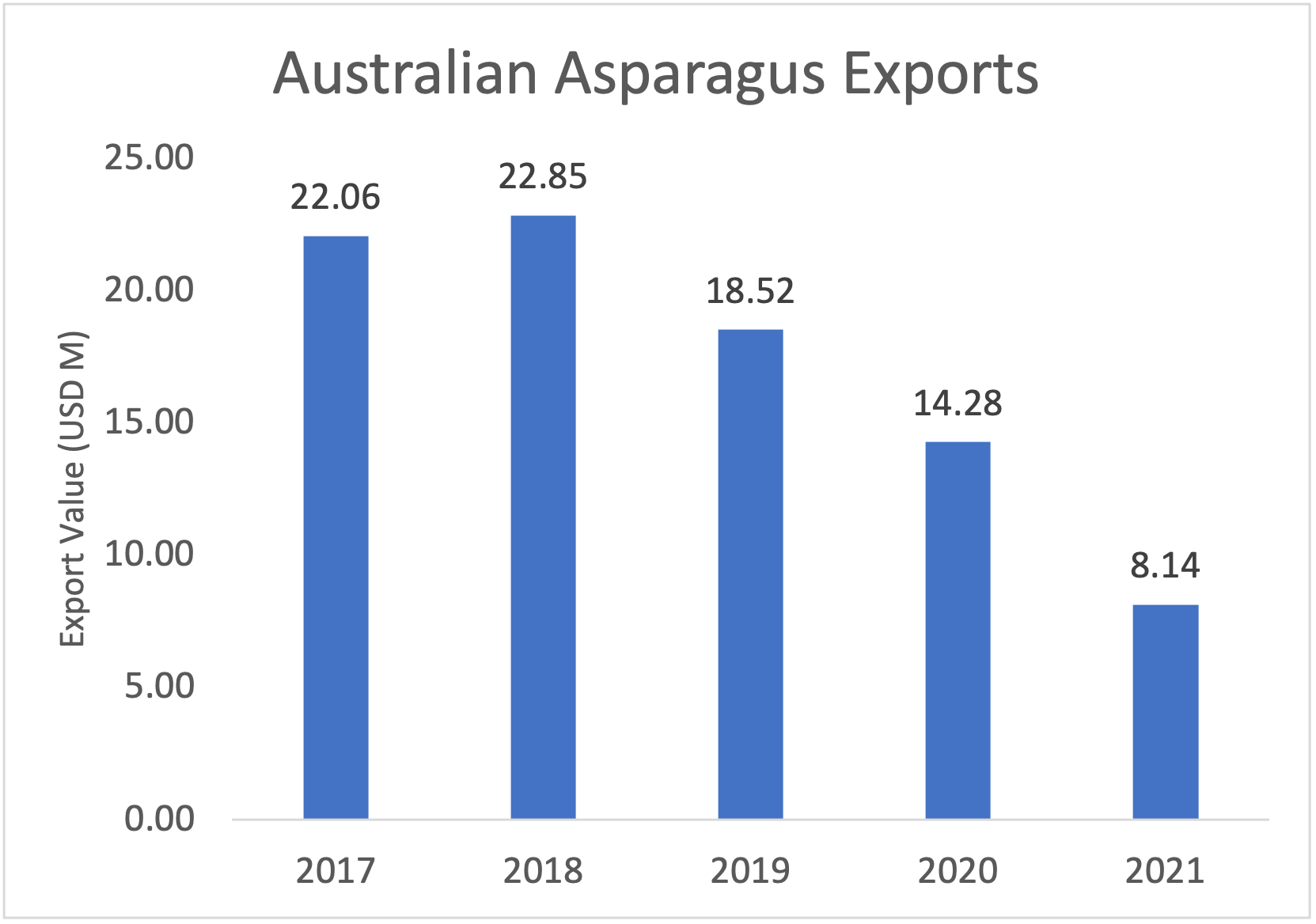Australian Asparagus Market Laden with Growth Potential

The Australian asparagus market has been developing over the years. Local production for asparagus has grown due to increasing local demand. The asparagus market in Australia holds an opportunity for growth since only 31% of households purchase the product due to low availability and high costs. Australia has a lot of room to expand in terms of consumption, production, imports, and sales of asparagus.
The Australian asparagus season starts in September and lasts through March, with the highest production from September to November. A smaller supply of asparagus is available during the summer, but most asparagus supply gets imported to cover demand. Asparagus harvesting and packaging is a labor-intensive practice since harvesting starts in the morning and packaging is completed on the same day to maximize freshness. The labor requirement for asparagus production has been an issue since the outbreak of COVID-19 because Australia faces a general labor shortage in all industries. Australia had unfavorable weather with heavy rains in 2021, which added to the labor shortage and triggered a drop in asparagus production.
Asparagus production in Australia decreased by 15.1% YoY during 2021, dropping from a production volume of 8.08K tons in 2020 to 6.86K tons in 2021. Decreased production combined with logistics issues triggered a 43% YoY drop in the export value to USD 8.14M in 2021, equivalent to 1.29K tons. The top export destinations for Australian asparagus in 2021 were Japan with a 48.8% market share, South Korea with a 14.7% market share, Hong Kong with an 11.3% market share, Singapore with a 10.9% market share, and Taipei with a 10.4% market share.

Source: ITC Trade Map
Australia’s per capita consumption of asparagus is 416g, meaning Australia needs 11.78k tons of asparagus annually to cover local demand. Per capita demand has increased by 30% over the past decade and is forecasted to keep rising at a similar rate. Since local production of asparagus only reached 6.86K tons in 2021, Australia needs to import asparagus to cover the local demand of 11.78K and the export demand of 1.29K tons.
In 2021, Australia imported 3.07K tons of fresh asparagus, equivalent to USD 13.61M. In 2021, Australia sourced 97.1% of asparagus imports from Mexico and the remaining 2.9% from the United States, Thailand, Mozambique, and Italy. In 2021, the 3.07K tons of asparagus imported to Australia only represented 23.49% of the overall supply needed for local and export demand (13.07K tons), and the local asparagus production of 6.86K tons only covered 52.49%. Together, imports and local production of asparagus covered 75.98% of the overall supply needed to cover demand, leaving room for additional imports of 3.14K tons.
Asparagus imports are necessary for Australia to cover local and export demand since local production is sufficient due to weather complications and labor shortages. The 3% increase in the average annual per capita consumption of asparagus creates a market gap in Australia that makes it an interesting destination for asparagus imports.





